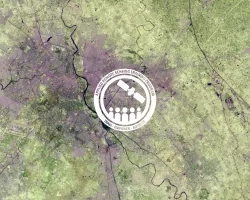Description
Space-based CO2 measurements have become an important capability in support of climate studies and to inform policy decisions. This intermediate, three-part webinar series will build on the previous CO2 training from 2022, providing a more in-depth review of OCO-2 and OCO-3 measurements along with demonstrations of case-studies. The latter will focus on how to read, visualize and interpret the data, how to account for quality flags in an analysis, how to use the data from the OCO missions to analyze impacts of an El Niño event on atmospheric CO2 and carbon sources and sinks, and how to examine spatial variations of CO2 over a metropolitan area. The demonstration will be conducted using Jupyter Notebook.
This training is also available in Spanish.
By the end of this training attendees will be able to:
- Identify the characteristics and limitations of the NASA Orbiting Carbon Observatory, OCO-2 and OCO-3 XCO2 measurements.
- Access and download data through the Distributed Active Archive Center (GES DISC), and open and visualize XCO2 data from OCO-2/OCO-3 in GES DISC Earthdata.
- Interpret XCO2 data from OCO-2/OCO-3 for global, regional, and local scales.
- Assess the level of confidence to place in XCO2 measurements using the quality flags incorporated into each dataset.
- Analyze OCO-2 data for assessing the impacts of an El Nino event on Level 2 CO2 concentrations and Level-4 fluxes over tropical regions.
- Analyze OCO-3 data for assessing the variations in Level-2 CO2 concentrations over a metropolitan area.
- Primary Target Audience: Scientists in the field and local, regional, and federal organizations from climate agencies
- Secondary Target Audience: NGO’s, academics, and students
- Three, 2-hour sessions
- There will be a sesson in English (12:00-14:00 EDT) and a session in Spanish (15:00-17:00 EDT) each day
ARSET Trainers: Erika Podest (JPL/Caltech)
Guest Instructors: Vivienne Payne (JPL/Caltech), Abhishek Chatterjee (JPL/Caltech), Junjie Liu (JPL/Caltech)
- Identify the characteristics and limitations of XCO2 measurements from OCO 2/OCO-3.
- Explore application areas where XCO2 is useful.
- Identify where to access and how to use the quality flags in a data set for assessment of the measurement.
- Interpret data and address considerations for using CO2 in different application areas.
Materials:
ARSET Trainers: Erika Podest (JPL/Caltech)
Guest Speakers: Junjie Liu (JPL/Caltech), Karen Yuen (JPL/Caltech), David Moroni (JPL/Caltech)
- Identify El Niño event effects that can create regional drought conditions.
- Monitor global fluxes of atmospheric CO2 concentrations to identify vulnerable areas.
- Use OCO-2 data to visualize areas impacted by drought and perform an interpretative and comparative analysis.
- Identify the methods and processes to derive fluxes with atmospheric CO2 measurements and interpret regional flux perturbations and country-scale f luxes and emissions.
- Follow steps to clone the ARSET Github repository and maintain the local code.
Materials:
ARSET Trainers: Erika Podest (JPL/Caltech)
Guest Instructors: Abhishek Chatterjee (JPL/Caltech), Karen Yuen (JPL/Caltech), David Moroni (JPL/Caltech)
- Recognize the importance and challenges of measuring carbon dioxide over metropolitan areas.
- Identify important aspects of space-based CO2 measurements over urban areas.
- Visualize OCO-3 SAM data over urban areas and perform an interpretative and comparative analysis.
- Access, subset, and download multi-year OCO-3 SAM data using a provided Jupyter notebook.
Materials:



